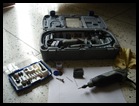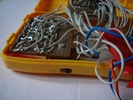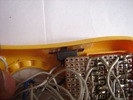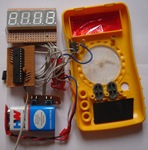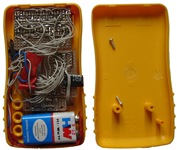If I remember correctly, my first introduction to circuits was in my 4th grade when my dad’s friend gave me a neat science-projects like kit. The kit contained components to teach the basics of electronics - switches, a buzzer, small incandescent bulbs (I absolutely dislike using these bulbs nowadays because of the power they drain), wires, steel wool, and other such things.
I was in the US at that time, and Lucas, a friend, and I, used to perform the ‘experiments’ given the handbook. I don’t know what Lucas’ dad did exactly, but to me he was some sort of god; he had tons of toasters and mixers and radios and TVs and machines lying open in his house. My mom would definitely have hit the roof had she seen such an untidy house. But I loved that house because, I suppose, it contributed a lot towards encouraging me to explore electronics as a hobby. And would you believe I’ve still got components from that kit!
In the 6th grade I read something about an FM transmitter and pestered my mum to take me ‘shopping’. I bought a couple of condenser mikes and speakers, but not knowing anything about transistors and chips, got absolutely nowhere. I did, however, manage to build a working crystal radio – very interesting things, I must say.
I always loved mechanics, and continued tinkering with small motors and toy cars and bulbs till the 10th grade. Finally, when I moved to junior college, I got my first formal introduction to electronics. I had loved the mechanical aspect of things, and could put my hand to anything that had gears and rods and levers. So junior college, with its electronics, was a new experience.
Every year I keep growing in experience and exposure, and my ‘To Do’ list keeps expanding. There are a lot of things that I want to build, but I’ve either not had the time or the knowledge to see them through. A lot of the things in the list are half complete; some of them have passed the proof-of-concept stage and are awaiting, to borrow from software lingo, the transition from beta to release version. Summer break is the perfect time to hit these projects with a vengeance, and I certainly plan to achieve a lot during these two and a half months.
The only problem – as I’m researching one project I invariably come across something new and attractive, which but naturally, gets appended to the To Do list, making it longer still!
Here’s my list, in current form:
| Project | Status |
| Linear PSU | v3; Revision required |
| SMPS | Proof-of-concept |
| Home Energy Meter | To be done |
| Air Conditioner Controller | v1; Revision required |
| Computer Controller DMX | To be done |
| Ultrasonic Rangefinder | Proof-of-concept |
| Digital LC Meter | To be done |
| Temperature Controller for Soldering Iron | Proof-of-concept |
| Long Range Walkie Talkies | To be done; (searching for info) |
| Home Intercom Using Old Phones | To be done |
| Drill Press | To be done (currently collecting parts) |
| CNC Milling Machine | To be done (currently collecting parts) |
| iTrip Mod | v1; Working |
| iPod Mini Remote | To be done |
| Auto-balancing Inverted Pendulum | To be done |
| PIC to VGA | To be done |
| Optical Mouse Based Navigation System for Small Robots | Proof-of-concept |
| Very Long Range IR Transmitter | Proof-of-concept; (currently collecting parts) |
| USB PIC Programmer | To be done |
| Class D Audio Amplifier | v1; Revision required |
| Digital Weigh Scale | To be done |
| Low Cost USB Oscilloscope | Proof-of-concept |
| Nokia 3310 / 6610 LCD Interface | Proof-of-concept |
| CYUSB6934 Radio Interface | Proof-of-concept |
| Lightweight Multipurpose Robotic Platforms (to be christened ‘Saxiest’ :-D ) | v2; Revision required (currently collecting parts) |
| Foot Speed Controller for my Dremel XPR | To be done; (searching for info) |
As you can see, several projects still need to be started. Any advice/help/experience is most welcome :-)

